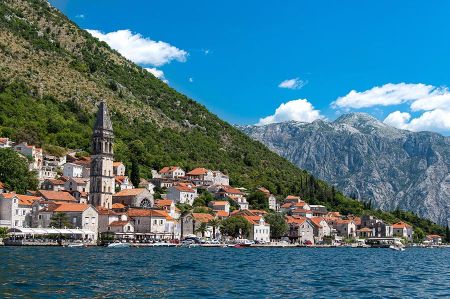Bay of Kotor – a wonderful old town awaits us
- Written by Portal Editor
After we had repeatedly avoided driving around the beautiful Bay of Kotor on the way to Albania due to time constraints (we had always used the ferry at Kemenari), this time we were supposed to take the E 65 or E 80 around the bay to Kotor, with a stopover at the beach in Perast.
Kotor is located about 50 kilometres west of Nikic, at the foot of the steep Lovcen massif, which rises to 1,749 meters, it is clear that the surrounding mountains always provide wonderful viewpoints of the city and the bay.
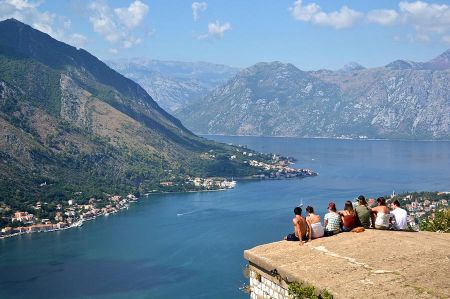 Today's UNESCO World Heritage Site Kotor is, on the one hand, the oldest city in Montenegro and, on the other hand, a charming natural harbour in the huge bay, which offered favourable protection in maritime trade for thousands of years, which attracted the Illyrians as early as the 3rd century BC, who were later followed by the Greeks and Romans. In 168 BC Kotor was first mentioned in written records as Ascrivium; The settlement by the Romans began at that time.
Today's UNESCO World Heritage Site Kotor is, on the one hand, the oldest city in Montenegro and, on the other hand, a charming natural harbour in the huge bay, which offered favourable protection in maritime trade for thousands of years, which attracted the Illyrians as early as the 3rd century BC, who were later followed by the Greeks and Romans. In 168 BC Kotor was first mentioned in written records as Ascrivium; The settlement by the Romans began at that time.
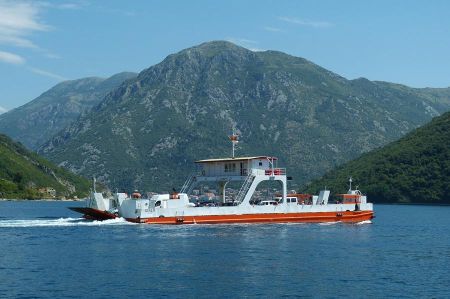 During the Roman Empire, the city initially belonged to the province of Dalmatia. Emperor Diocletian assigned Kotor to the newly formed province of Praevalitana at the end of the 3rd century.
During the Roman Empire, the city initially belonged to the province of Dalmatia. Emperor Diocletian assigned Kotor to the newly formed province of Praevalitana at the end of the 3rd century.
In response to the migration of peoples, Kotor was heavily fortified in Byzantine times. First, Emperor Justinian had a fortress built near Ascrivium in 535. In 840 the city was sacked by a Saracen fleet. In 1242 the city was destroyed again, this time in the Mongol storm.
Further key points of Kotor's eventful history
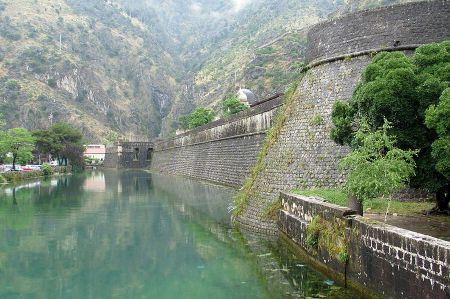 In the 10th century, Kotor was an autonomous city ruled from Byzantium. From 1186 to 1371, Kotor was a free city of medieval Serbia before briefly becoming Venetian and later Hungarian.
In the 10th century, Kotor was an autonomous city ruled from Byzantium. From 1186 to 1371, Kotor was a free city of medieval Serbia before briefly becoming Venetian and later Hungarian.
From 1395 to 1420 Kotor was an independent republic and reverted to Venetian rule until 1797. In the Middle Ages, this natural harbour on the Adriatic coast was an important art and trade centre with its own famous schools of masonry and iconography.
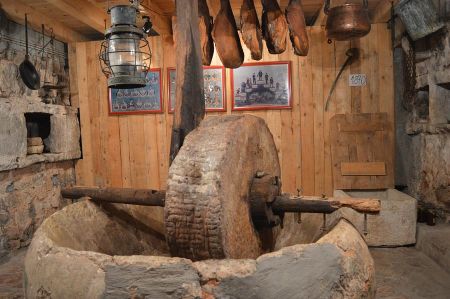 The city regularly suffered damage from Turkish attacks and also from fairly strong earthquakes.
The city regularly suffered damage from Turkish attacks and also from fairly strong earthquakes.
Between 1807 and 1814 Kotor was occupied by France. The French period was followed by Austrian rule until 1918, when Slavic sailors from the Austro-Hungarian Navy mutinied in Kotor and it was absorbed into the Kingdom of Serbs, Croats and Slovenes. From 1929 to 2003 Kotor was part of Yugoslavia.
Many of the monuments, including four Romanesque churches and the city walls, were badly damaged by the 1979 earthquake but have largely been rebuilt. The place has been part of the independent state of Montenegro since 2006.
Kotor Old Town is a historical delight
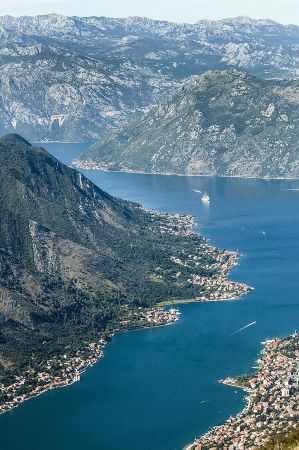 It will be clear to anyone who knows history without question that these changing rulers of the city and the bay also developed different architectural styles and therefore very different influences. With this fascinating mix of numerous architectural styles from all over Europe, which contains both spacious squares and narrow streets, the Old Town of Kotor invites you to explore in detail. A lot has changed in two thousand years of history, but the view from the city's walls and fortresses is certainly as magnificent and impressive today as it was for traveling merchants over the centuries.
It will be clear to anyone who knows history without question that these changing rulers of the city and the bay also developed different architectural styles and therefore very different influences. With this fascinating mix of numerous architectural styles from all over Europe, which contains both spacious squares and narrow streets, the Old Town of Kotor invites you to explore in detail. A lot has changed in two thousand years of history, but the view from the city's walls and fortresses is certainly as magnificent and impressive today as it was for traveling merchants over the centuries.
Much of Kotor's medieval fortresses have been preserved. The city walls extend over 4.5 km, are 2 meters to 15 meters thick and reach a maximum height of 20 meters. The main gate dates from the 16th century. The South Gate, the oldest in Kotor, was partially built in the 9th century.
 In addition to the imposing city wall, the largest and most beautiful building is probably the Saint Tryphon Cathedral. Built in 1166, it contains numerous frescoes and a treasury with a rich collection of artworks by Marin Lovra Dobricevic, Tripo Kokolj, Paolo Veroveza, Hieronim Santa Croce and other great artists.
In addition to the imposing city wall, the largest and most beautiful building is probably the Saint Tryphon Cathedral. Built in 1166, it contains numerous frescoes and a treasury with a rich collection of artworks by Marin Lovra Dobricevic, Tripo Kokolj, Paolo Veroveza, Hieronim Santa Croce and other great artists.
The church is in possession of gold and silver relics, which include works by local masters from the 14th to the 18th centuries. On the wall of the apse there is a golden altarpiece with the figures of Christ, the Virgin, Saint John the Baptist and Saint Tryphon as well as sixteen other saints.
It is a masterpiece of Kotor goldsmithing from the 15th century. Under Venetian rule, a number of palaces were built between the 15th and 18th centuries, which still shape the cityscape today.
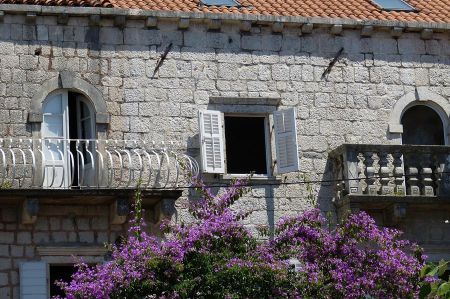 Also noteworthy is the Church of St. Luke from 1195, which was originally Roman Catholic but has been Orthodox since the 17th century. The Church of St. Mary from 1221 with medieval frescoes and the remains of a 6th-century basilica, as well as several palaces of famous families, including the 18th-century Palace of Grgurina, now a maritime museum, invite you to travel back in time a. At night the walls and fortifications above Kotor are brightly lit.
Also noteworthy is the Church of St. Luke from 1195, which was originally Roman Catholic but has been Orthodox since the 17th century. The Church of St. Mary from 1221 with medieval frescoes and the remains of a 6th-century basilica, as well as several palaces of famous families, including the 18th-century Palace of Grgurina, now a maritime museum, invite you to travel back in time a. At night the walls and fortifications above Kotor are brightly lit.
The Clock Tower - the symbol of Kotor
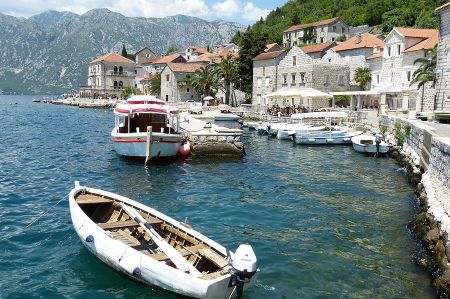 The so-called Renaissance-style clock tower is one of Kotor's landmarks. It occupies a central place opposite the main gate.
The so-called Renaissance-style clock tower is one of Kotor's landmarks. It occupies a central place opposite the main gate.
It was built in 1602, but was not yet finished at the time of the 1667 earthquake and then leaned significantly to the west.
Later there were some attempts to return it to an upright position, but after the catastrophic earthquake of 1979 the clock tower returned to the same position.
Today Kotor is a UNESCO World Heritage City
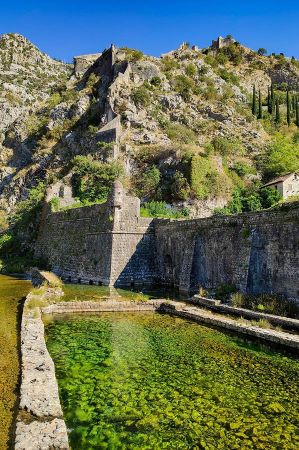 In April and May 1979, shortly before its final inscription on the UNESCO World Heritage List, Kotor was severely damaged in two strong earthquakes. As a result of this earthquake, UNESCO placed it on the list of World Heritage in Danger that same year.
In April and May 1979, shortly before its final inscription on the UNESCO World Heritage List, Kotor was severely damaged in two strong earthquakes. As a result of this earthquake, UNESCO placed it on the list of World Heritage in Danger that same year.
By 1989, much had been rebuilt with international help. In the 1990s, Kotor's status as a world heritage site was jeopardized by uncontrolled construction measures, as there are numerous violations of world heritage guidelines around the world. An example of this is the construction of the Elbe bridge near Dresden, which had almost the same impact.
At the beginning of 2003, after an inventory, experts recommended removal from the list of endangered world heritage sites on the condition that an overall concept be drawn up to solve the problems of uncontrolled construction.
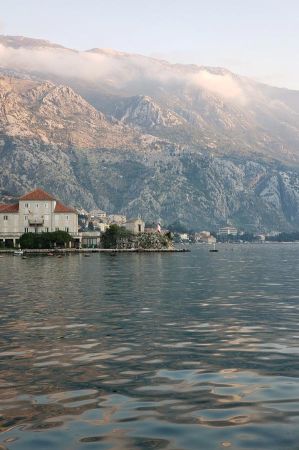 The German World Heritage Foundation then initiated a round table in November 2003, with the result that a comprehensive concept was developed by the end of 2006, which was supported by the national authorities. The foundation cooperates with the regional institute for the protection of cultural heritage in the implementation and raises funds to implement the World Heritage guidelines in the reconstruction of the historical buildings.
The German World Heritage Foundation then initiated a round table in November 2003, with the result that a comprehensive concept was developed by the end of 2006, which was supported by the national authorities. The foundation cooperates with the regional institute for the protection of cultural heritage in the implementation and raises funds to implement the World Heritage guidelines in the reconstruction of the historical buildings.
The indescribable value of the Kotor region for us is particularly evident in the quality of the architecture of its fortified cities, the smaller settlements, the palaces and monasteries and their harmonious integration into the terraced landscape on the slopes. The cultural and historical region of Kotor is probably unique proof of the important role that the city and bay have played over the centuries in the spread of Mediterranean cultures in the Balkans: always worth a trip.
Bay of Kotor – A magnificent old town awaits us - more details
Welcome to the Adriatic – Where Montenegro enchants
Welcome to Kotor, a place where you'll feel like you're in the middle of a Mediterranean fairytale. Nestled in the breathtaking Bay of Kotor lies this charming town with its winding old town, ancient walls, and a panorama that will take your breath away.
Kotor – Europe's hidden treasure
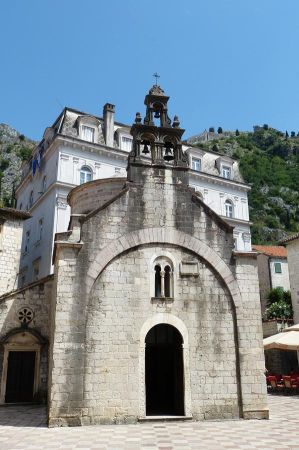 Kotor is one of those places you may not have had on your radar until you get there. Then you'll never want to leave.
Kotor is one of those places you may not have had on your radar until you get there. Then you'll never want to leave.
The bay: a natural wonder with history
Like a Norwegian fjord – only with sun! The bay is a natural jewel, shaped by time and sustained by stories.
The location of the Bay of Kotor
Nestled between mountains and sea
The bay winds like a river between rugged mountains – turquoise water meets green slopes and red-tiled roofs.
Mediterranean flair with Balkan charm
Here, East and West, antiquity and modernity, joie de vivre and serenity merge.
The Old Town of Kotor – UNESCO World Heritage Site
Narrow streets, ancient walls, Mediterranean magic
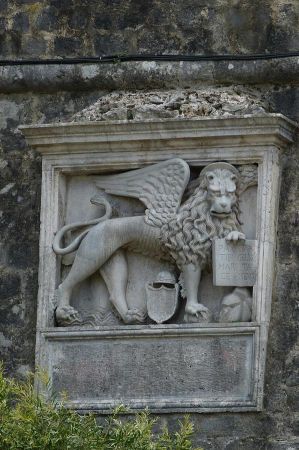 Every alley here tells a story. Getting lost is part of the program – and a pleasure!
Every alley here tells a story. Getting lost is part of the program – and a pleasure!
The city walls – a walk with a view
Those who master the steps will be rewarded: at the top, a view awaits that is among the most beautiful in the world.
Historical overview – Kotor through the centuries
Roman origins and Byzantine influence
Even the Romans appreciated the strategic location – later came the Byzantines, Slavs, and Venetians.
Venetian splendor and Ottoman traces
The Venetians left behind magnificent facades, turrets, and squares – with an oriental touch and uniquely beautiful.
Architecture and Sights
Cathedral of St. Tryphon
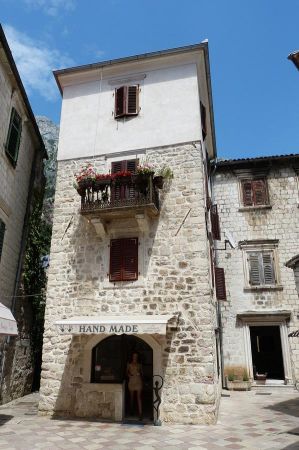 The spiritual heart of the city – Romanesque, mighty, and with gold-decorated interiors.
The spiritual heart of the city – Romanesque, mighty, and with gold-decorated interiors.
Fortress of St. Giovanni – 1,350 Steps of History
Strenuous, but rewarding. The old fortress towers above Kotor like an eagle's nest.
Local Life in the Old Town
Cafes, Crafts, Small Boutiques
Here, hammering, carving, baking – and, of course, coffee – is still practiced.
Markets, Music, and Mediterranean Joy of Life
Whether it's a farmers' market or street music – life is vibrant in Kotor.
Explore the Bay Area
Perast – the Jewel of the Coast
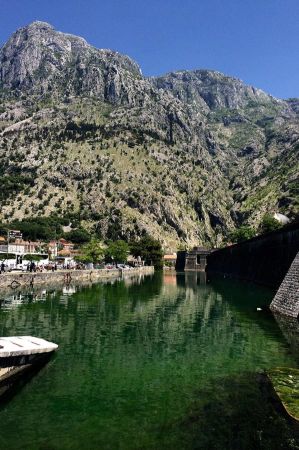 Baroque palaces, quiet alleys, and a backdrop like something out of a historical film – Perast is a must-see.
Baroque palaces, quiet alleys, and a backdrop like something out of a historical film – Perast is a must-see.
Our Lady of the Rocks – an island steeped in legend
An artificially created island with a chapel – it is expanded with stones every year.
Activities around the bay
Hiking with a sea view
There are beautiful hiking trails around the bay – ideal for nature and photography enthusiasts.
Boat Trips and Kayak Tours
On the water, the bay is a whole different world – calm, clear, almost mystical.
Cuisine – The Taste of Kotor
Fish, Olive Oil, and Wine
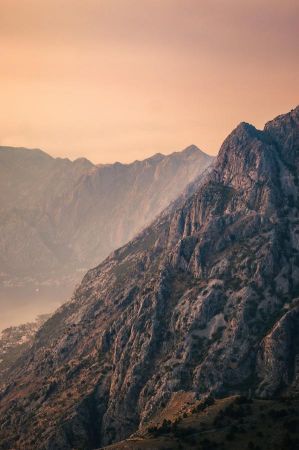 Fresh, local, and simply delicious – that's the cuisine of the bay.
Fresh, local, and simply delicious – that's the cuisine of the bay.
Must-Try Local Specialties
Try Njeguški Pršut (air-dried ham) or Pastrmka (trout) – a feast for the palate!
Best Time to Visit Kotor
Spring and Autumn – Pure nature and tranquility
Fewer tourists, pleasant temperatures – ideal for exploring.
Summer – Cultural Festivals and a Beach Vibe
Those who love hustle and bustle will get their money's worth in summer – with music, events, and plenty of sunshine.
Where to Stay?
Old Town or Waterfront – Where's the Most Beautiful
In the Old Town, you'll sleep like a museum. On the water, it's like paradise.
From boutique hotels to family guesthouses, Kotor has something to suit every budget and every taste.
The Bay of Kotor at night
Pure romance under a starry sky
When the lights come on and the city is reflected in the water – simply unforgettable.
Lights reflected in the water – magic guaranteed
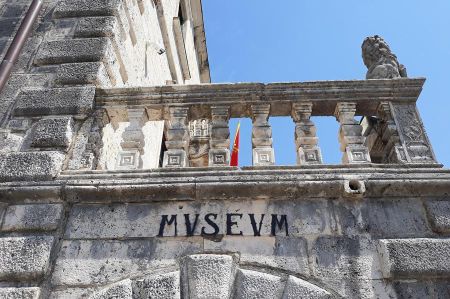 A glass of wine, a gentle breeze, and this picture before your eyes – what more could you want?
A glass of wine, a gentle breeze, and this picture before your eyes – what more could you want?
Sustainable tourism in Kotor
How the region protects its treasures
Local initiatives pay attention to environmental protection, waste prevention, and cultural preservation.
Travel with respect as a visitor
Less plastic, more consideration – this is how Kotor remains the paradise it is.
Keep Kotor in your heart
Postcard motifs and lasting memories
There are places that remain – Kotor is one of them.
A city that is more than a destination
It is a feeling, a view, a sound – and a piece of the soul.
Conclusion – The Bay of Kotor: A Place to Fall in Love
Anyone who has ever strolled through the alleys of Kotor, felt the tranquility of the bay, or watched the sunset from the fortress will understand: Kotor is not just a place, but a feeling. And you'll want to relive that feeling again and again.
FAQs about the Bay of Kotor
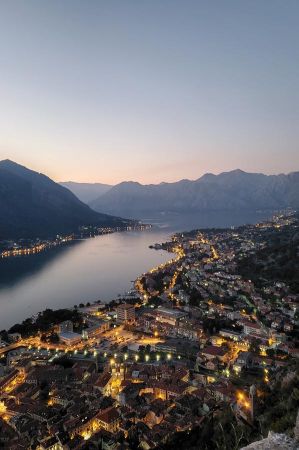 1. Is Kotor easy to explore on foot?
1. Is Kotor easy to explore on foot?
Absolutely! The Old Town is car-free and perfect for walking.
2. How do I get to Kotor?
It's best to fly to Tivat or Podgorica, then continue by bus or rental car.
3. Is there admission to the Old Town?
No, admission is free. Only certain attractions charge a small fee.
4. How long should you stay in Kotor?
At least 2–3 days to truly enjoy the city and surrounding area.
5. Is Kotor family-friendly?
Yes, especially outside of peak season it is wonderfully quiet and safe, even with children.
Please read as well:
From Podgorica – hike through the Albanian Alps
Ouranoupoli – seaside resort and port for Athos monasteries
-
 Kotor - Bay and historical old Town
Kotor - Bay and historical old Town
Kotor - Bay and historical old Town
Kotor - Bay and historical old Town
-
 Kotor - Bay and historical old Town
Kotor - Bay and historical old Town
Kotor - Bay and historical old Town
Kotor - Bay and historical old Town
-
 Kotor - Bay and historical old Town
Kotor - Bay and historical old Town
Kotor - Bay and historical old Town
Kotor - Bay and historical old Town
-
 Kotor - Bay and historical old Town
Kotor - Bay and historical old Town
Kotor - Bay and historical old Town
Kotor - Bay and historical old Town
-
 Kotor - Bay and historical old Town
Kotor - Bay and historical old Town
Kotor - Bay and historical old Town
Kotor - Bay and historical old Town
-
 Kotor - Bay and historical old Town
Kotor - Bay and historical old Town
Kotor - Bay and historical old Town
Kotor - Bay and historical old Town
-
 Kotor - Bay and historical old Town
Kotor - Bay and historical old Town
Kotor - Bay and historical old Town
Kotor - Bay and historical old Town
-
 Kotor - Bay and historical old Town
Kotor - Bay and historical old Town
Kotor - Bay and historical old Town
Kotor - Bay and historical old Town
-
 Kotor - Bay and historical old Town
Kotor - Bay and historical old Town
Kotor - Bay and historical old Town
Kotor - Bay and historical old Town
https://www.alaturka.info/en/montenegro/6573-bay-of-kotor-a-wonderful-old-town-awaits-us#sigProIded3585d4d7
